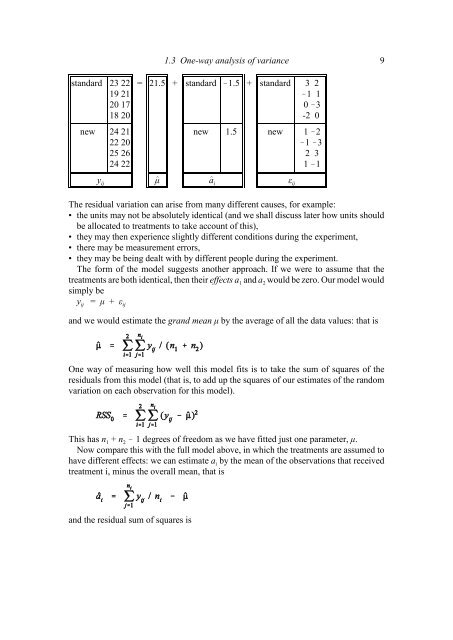Download pdf guide - VSN International
Download pdf guide - VSN International
Download pdf guide - VSN International
Create successful ePaper yourself
Turn your PDF publications into a flip-book with our unique Google optimized e-Paper software.
standard 23 2219 2120 1718 20new 24 2122 2025 2624 221.3 One-way analysis of variance 9= 21.5 + standard 1.5 + standard 3 21 10 3-2 0new 1.5 new 1 21 32 31 1y ì a å^^ij i ijThe residual variation can arise from many different causes, for example:• the units may not be absolutely identical (and we shall discuss later how units shouldbe allocated to treatments to take account of this),• they may then experience slightly different conditions during the experiment,• there may be measurement errors,• they may be being dealt with by different people during the experiment.The form of the model suggests another approach. If we were to assume that thetreatments are both identical, then their effects a 1 and a 2 would be zero. Our model wouldsimply bey = ì + åijijand we would estimate the grand mean ì by the average of all the data values: that isOne way of measuring how well this model fits is to take the sum of squares of theresiduals from this model (that is, to add up the squares of our estimates of the randomvariation on each observation for this model).This has n 1 + n 2 1 degrees of freedom as we have fitted just one parameter, ì.Now compare this with the full model above, in which the treatments are assumed tohave different effects: we can estimate a i by the mean of the observations that receivedtreatment i, minus the overall mean, that isand the residual sum of squares is
















